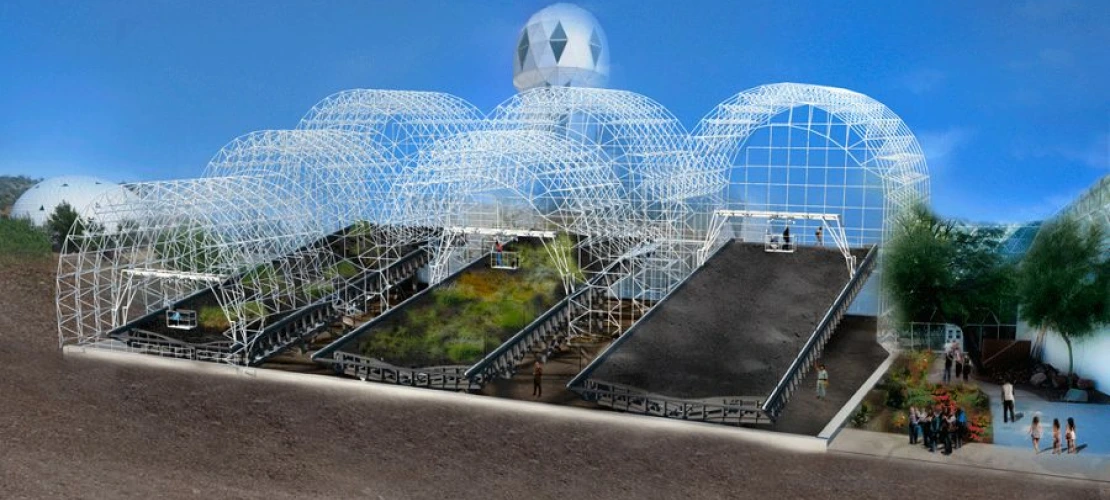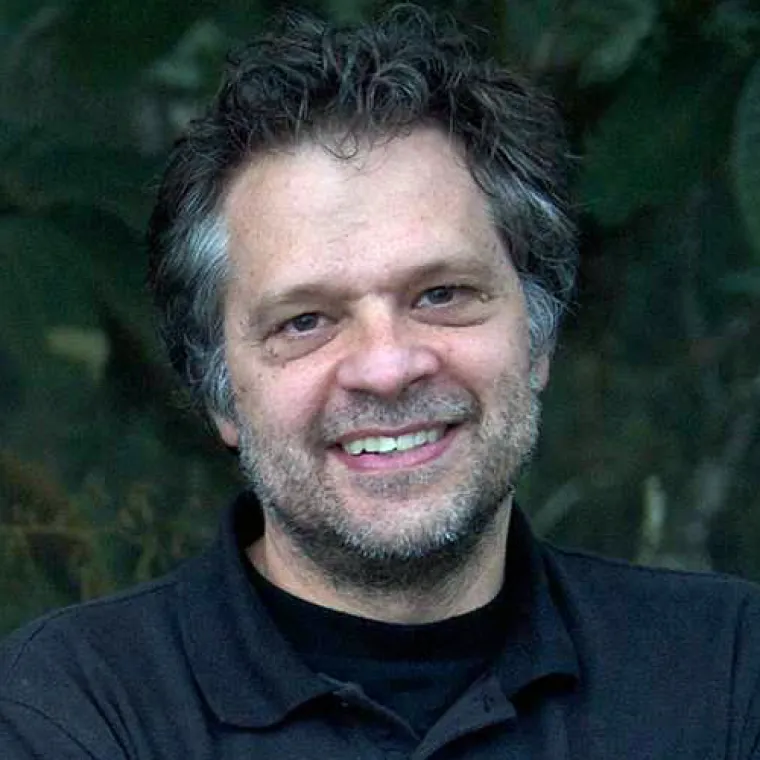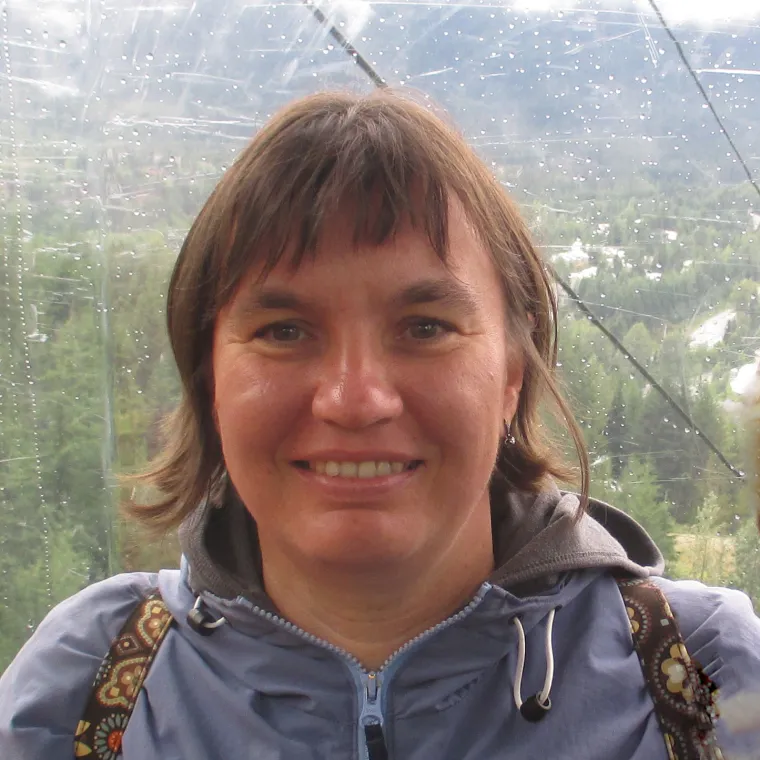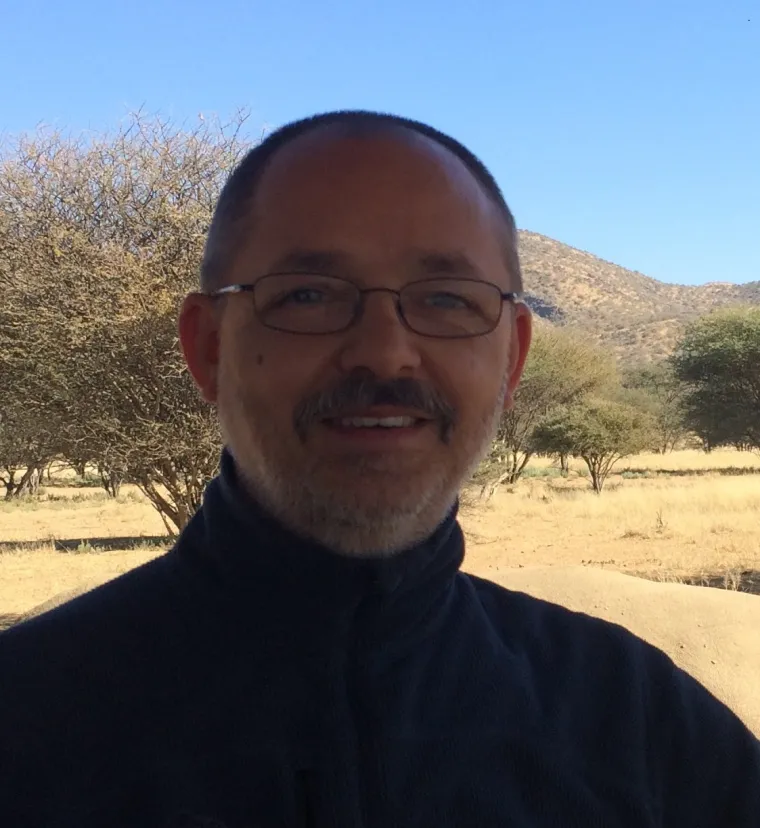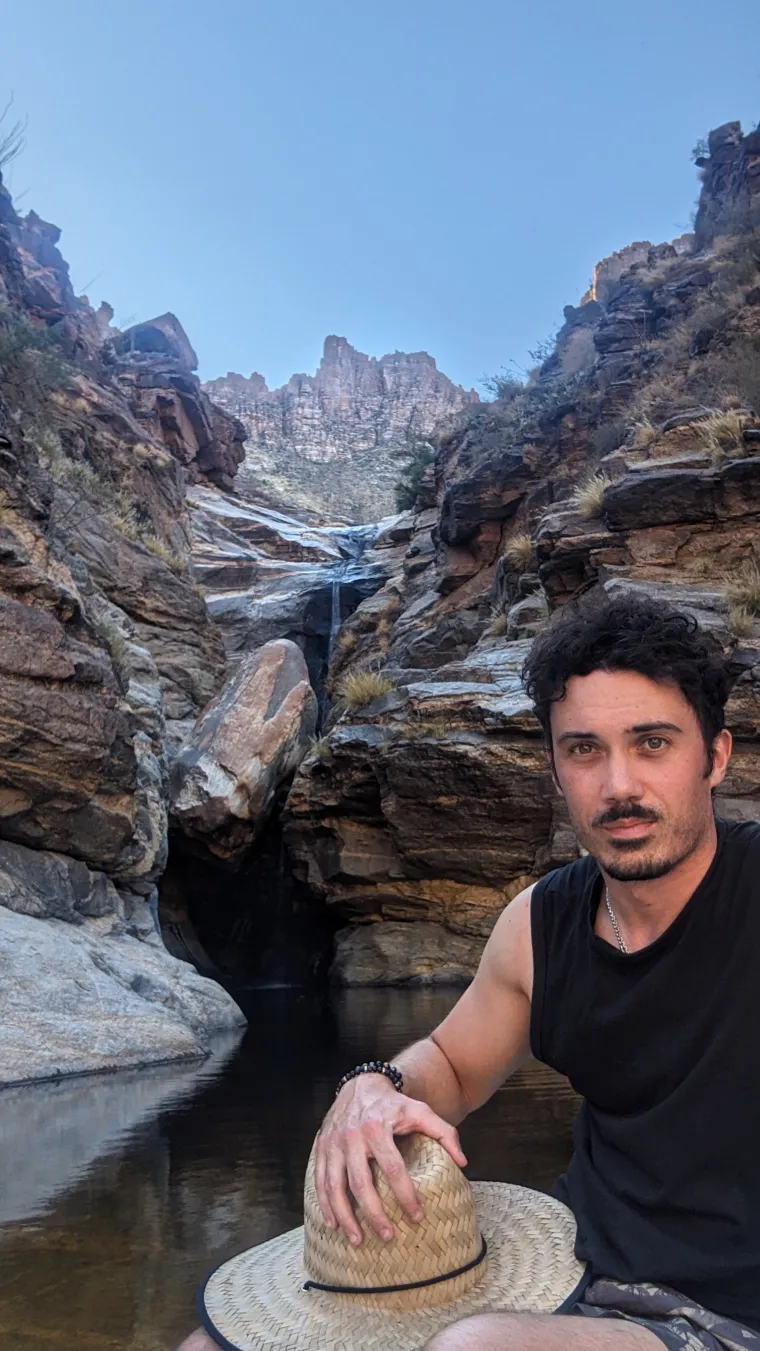The Earth system consisting of air, water, soil, plants and microbes is a complex, interacting system. How do physical and biological processes interactively control the evolution of landscapes? How is water flowing through landscapes influenced by their evolution in time, and by climate change? How do biological communities organize and respond to landscape evolution and environmental change? These are some examples of the most important and complicated Earth system science questions reflecting the complex nature of the Earth system with so many interactive parts And they’re ones that the Landscape Evolution Observatory, a physical model to simplify the complex interactions by controlling parts of the system, was designed to help answer.
The Landscape Evolution Observatory (LEO) is the world’s largest laboratory experiment in the interdisciplinary Earth sciences. The experiment consists of three artificial landscapes contained within elaborate steel structures and located inside three adjacent bays within the University of Arizona – Biosphere 2. The landscapes are designed as experimental replicates; each has dimensions of 30-m length, 11-m width, an average slope of 10°, and is filled to a uniform depth of 1 m with crushed basalt rock that was extracted from a volcanic crater in northern Arizona. In their initial state, the landscapes consist of approximately 500 metric tons (more than 1 million pounds) of the crushed rock, which has a loamy sand texture. This initial condition will allow scientists to observe each step in the landscapes’ evolution—from purely mineral and abiotic substrate to living, breathing landscapes that will ultimately support microbial and vascular plant communities.
Those observations are made possible by the array of more than 1,800 sensors and sampling devices that are installed on, within, or above each landscape. The sensors enable monitoring of water, carbon, and energy cycling processes, and the physical and chemical evolution of the landscape at sub-meter to whole-landscape scales. As the soil, topography, and biological communities evolve to increasingly complex states, scientists will be able to document how those changes affect water, carbon, and energy cycling within the landscape, and between the landscape and the atmosphere.
Research at LEO will advance our understanding of how climate change may impact water resources and ecosystems in arid environments. This understanding will result from iterations of well-designed physical experiments with LEO and virtual experiments with mathematical models of coupled ecohydrological processes. Since LEO resides within the climate controlled Biosphere 2 facility, researchers can perform manipulative experiments to examine how the water, soil, plant, and microbes respond to diverse scenarios of climate (air temperature and rainfall) The climate control capabilities, well-defined system properties, and network of sensors make LEO an exceptional platform for developing and testing mathematical models (conceptual models) that simulate this ecohydrological responses—the types of models that can be used to infer how water resources and ecosystems in real landscapes may be impacted by ongoing and future climate change.
Research in the Landscape Evolution Observatory are currently funded by:
- NSF GCR grant
- UA-CNRS partnership grant led by Katerina Dontsova
- NSF Hydrology grant led by Peter Troch


